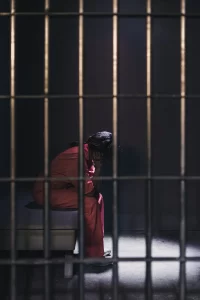
History and Controversy
Welcome to what is probably the most severe prison environment inflicted upon American convicts, short of execution. By various recent estimates, prison isolation units house as many as 80,000 inmates in the United States. They go by a multitude of names- administrative segregation, special housing units, intensive management units, supermax facilities or control units. To prison officials, they are a tool for safely confining the most dangerous and/or difficult-to-manage prisoners, and possibly motivating them to change their behavior. To prisoners’ rights advocates and some social scientists, control units are cruel and unusual punishment. The notion of controlling inmates by isolating them was first developed in the late 1700s by Quaker prison reformers, who saw it as a humane way to help evildoers realize the error of their ways. In 1790, Philadelphia’s Walnut Street jail became perhaps the first in the U.S. to isolate violent offenders. In the 1820s, the state of Pennsylvania created the Eastern State Penitentiary, where prisoners were kept in solitary confinement. Other countries also used solitary confinement, often as a way to torment prisoners or keep them from speaking out. After French Army captain Alfred Dreyfus was accused of being a spy and traitor in the 1890s, authorities initially kept him locked up around the clock in a shuttered, darkened cell, with guards ordered not to speak to him.
There are conflicting data on whether isolating prisoners reduces violence behind bars. New York State’s Department of Correctional Services claims its prison disciplinary system, which includes isolation units, helped reduce inmate-on-staff assaults by 35 percent between 1995 and 2006, and inmate-on-inmate violence by more than half. Solitary confinement made a comeback in the U.S. in the early 1980’s, when the killing of two guards by inmates at a federal prison in Marion, IL, prompted a permanent lockdown. California’s Pelican Bay, which opened in 1989, reportedly was one of the first in a new generation of facilities built deliberately to foster such isolation inside the prison. Critics of control units contend that severely restricting contact with other people can take a heavy toll on mental health. Craig Haney, a psychologist, concluded that many “begin to lose the ability to initiate behavior of any kind- to organize their own lives around activity and purpose. Chronic apathy, lethargy, depression, and despair often result.” Dr. Stuart Grassian, a psychiatrist, has studied scores of such prisoners and found that many suffer from panic attacks, difficulties with memory and concentration, and even hallucinations. He also found evidence that prolonged isolation might increase prisoners’ potential for violence. So far, courts have not found that control units violate constitutional protections against cruel and unusual punishment, though in 2003, the U.S. Supreme Court ruled that prisoners are entitled to a legal review in which they can challenge their confinement in isolation.
In this hyper connected age, what is it like to be suddenly cut off from social contact?
To open a window into the experience of solitary confinement, three “everyman” volunteers agreed to live for up to a week in replica solitary cells and share their experiences live over the Internet in real time via outgoing tweets (they could not receive any incoming communications), while a camera in each cell streamed 24/7. This was not meant to be an authentic replication of punitive solitary confinement, with one profound departure being that each participant stayed only up to one week and could opt out anytime. The intention was to provide an “everyman” perspective into the experience of social and claustrophobic isolation that are key hallmarks of solitary confinement.
